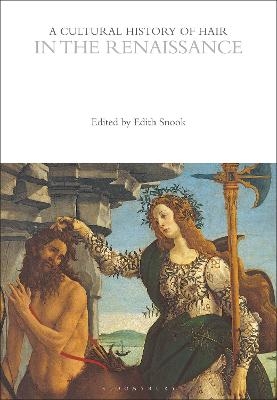
A Cultural History of Hair in the Renaissance
Seiten
2022
Bloomsbury Academic (Verlag)
978-1-350-28554-5 (ISBN)
Bloomsbury Academic (Verlag)
978-1-350-28554-5 (ISBN)
“A thick, tangled and deliciously idiosyncratic history of hair.” Times Literary Supplement
In the period 1450 to 1650 in Europe, hair was braided, curled, shaped, cut, colored, covered, decorated, supplemented, removed, and reused in magic, courtship, and art, amongst other things. On the body, Renaissance men and women often considered hair a signifier of order and civility. Hair style and the head coverings worn by many throughout the period marked not only the wearer’s engagement with fashion, but also moral, religious, social, and political beliefs. Hair established individuals’ positions in the period’s social hierarchy and signified class, gender, and racial identities, as well as distinctions of age and marital and professional status. Such a meaningful part of the body, however, could also be disorderly, when it grew where it wasn’t supposed to or transgressed the body’s boundaries by being wild, uncovered, unpinned, or uncut. A natural material with cultural import, hair weaves together the Renaissance histories of fashion, politics, religion, gender, science, medicine, art, literature, and material culture.
A necessarily interdisciplinary study, A Cultural History of Hair in the Renaissance explores the multiple meanings of hair, as well as the ideas and practices it inspired. Separate chapters contemplate Religion and Ritualized Belief, Self and Society, Fashion and Adornment, Production and Practice, Health and Hygiene, Sexuality and Gender, Race and Ethnicity, Class and Social Status, and Cultural Representations.
In the period 1450 to 1650 in Europe, hair was braided, curled, shaped, cut, colored, covered, decorated, supplemented, removed, and reused in magic, courtship, and art, amongst other things. On the body, Renaissance men and women often considered hair a signifier of order and civility. Hair style and the head coverings worn by many throughout the period marked not only the wearer’s engagement with fashion, but also moral, religious, social, and political beliefs. Hair established individuals’ positions in the period’s social hierarchy and signified class, gender, and racial identities, as well as distinctions of age and marital and professional status. Such a meaningful part of the body, however, could also be disorderly, when it grew where it wasn’t supposed to or transgressed the body’s boundaries by being wild, uncovered, unpinned, or uncut. A natural material with cultural import, hair weaves together the Renaissance histories of fashion, politics, religion, gender, science, medicine, art, literature, and material culture.
A necessarily interdisciplinary study, A Cultural History of Hair in the Renaissance explores the multiple meanings of hair, as well as the ideas and practices it inspired. Separate chapters contemplate Religion and Ritualized Belief, Self and Society, Fashion and Adornment, Production and Practice, Health and Hygiene, Sexuality and Gender, Race and Ethnicity, Class and Social Status, and Cultural Representations.
Edith Snook is Professor of English at the University of New Brunswick, Fredericton, Canada.
Series Preface
Introduction
1. Religion and Ritualized Belief, Gary K. White
2. Self and Society, Anu Korhonen
3. Fashion and Adornment, Carole Collier Frick
4. Production and Practice, Annemarie Kinzelbach
5. Health and Hygiene, Edith Snook
6. Gender and Sexuality, Mark Albert Johnston
7. Race and Ethnicity, Nicholas Jones
8. Class and Social Status, Jana Mathews
9. Cultural Representations, Lyn Bennett
Notes
Bibliography
Notes on Contributors
Index
| Erscheinungsdatum | 17.08.2022 |
|---|---|
| Reihe/Serie | The Cultural Histories Series |
| Zusatzinfo | 75 bw illus |
| Verlagsort | London |
| Sprache | englisch |
| Maße | 169 x 244 mm |
| Themenwelt | Kunst / Musik / Theater ► Design / Innenarchitektur / Mode |
| Kunst / Musik / Theater ► Kunstgeschichte / Kunststile | |
| Geschichte ► Teilgebiete der Geschichte ► Kulturgeschichte | |
| Sozialwissenschaften | |
| ISBN-10 | 1-350-28554-4 / 1350285544 |
| ISBN-13 | 978-1-350-28554-5 / 9781350285545 |
| Zustand | Neuware |
| Haben Sie eine Frage zum Produkt? |
Mehr entdecken
aus dem Bereich
aus dem Bereich
der stille Abschied vom bäuerlichen Leben in Deutschland
Buch | Hardcover (2023)
C.H.Beck (Verlag)
23,00 €
Die Revolution des Gemeinen Mannes
Buch | Softcover (2024)
C.H.Beck (Verlag)
12,00 €
vom Mittelalter bis zur Gegenwart
Buch | Softcover (2024)
C.H.Beck (Verlag)
12,00 €


